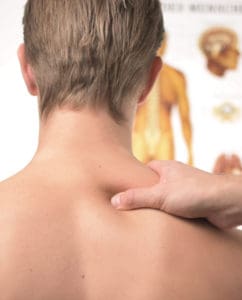For many people, chronic and acute pain is a dominant concern in their lives. They focus on determining its source and finding ways to minimize it in order for them to function productively.
Why is it that some experience no pain after an accident or medical procedure, while others whose limb had been amputated still feel ongoing phantom pain? During wartime, why do soldiers with severe injuries feel no pain when their attention is directed toward a far greater issue, gunfire that could take their life?

These are the questions that Canadian psychologist Ronald Melzack (who passed away last December 2019), in collaboration with British neuroscientist Patrick Wall, tried to answer. Their discoveries have become a precursor to one of the most exciting and rapidly advancing areas of science and medicine, not to mention its benefit to those who suffer. Their contribution has led to a new theory regarding the pathways of pain in the body.
Before their research work, pain was considered a symptom of a more significant disease process going on in the body. However, the duo’s research showed that severe pain was actually a problem in its own right, and often more debilitating than the initial cause.
Physicians have been aware that massaging the skin activates large nerve fibers near the surface, which specialize in detecting subtle variations of touch, while deeper small nerve fibers alert us to the incidence of tissue damage or an injury. Melzack and Wall discovered that these sensations pass through a “gate” in the spinal cord, where many signals are combined before sending the message to the brain. They saw that the large fibers can block the smaller fibers, and in effect, close the gate.

There are many factors beyond the injury itself that determine the level of pain: past experiences, culture, attention to the pain and other activities in the nervous system at the time of injury. Thus the information that gets to the brain, which sends the message of pain, depends on the activity in the small and large fibers coming through the gate.
Their belief that injury signals could be modified or blocked at the earliest stages of transmission in the nervous system — the “gate control” theory — is now universally accepted in the fields of medicine, psychology, and biology.
“There is a transmission station in the spinal cord that influences the flow of nerve impulses to the brain,” says a pain self-management journal article by Sandra LeFort and others. “Melzack and Wall called this transmission station a ‘gate.’ The gate can be opened or closed in several ways: positive mood, distraction, and deep relaxed breathing can act to fully or partially close the gate, while strong emotions like fear, anxiety and expecting the worst, can open the gate.”
At present, the Canadian Pain Society journal Pain Research and Management publishes clinical innovations spawned by the gate control theory from the international community of pain researchers and clinicians, who continue to work toward the elimination of the “silent epidemic of needless pain.”




